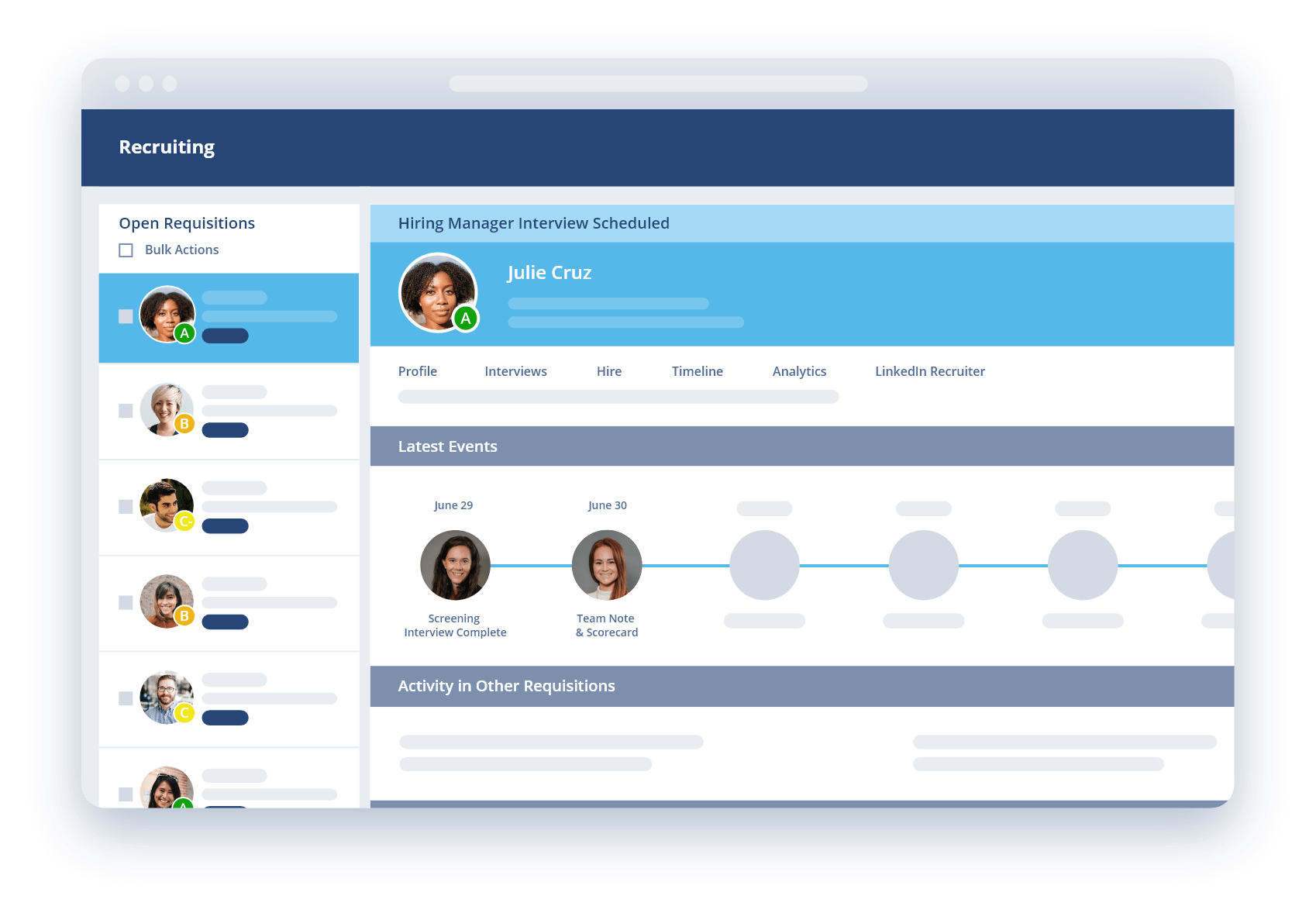
ULTIMATE GUIDE TO ATS SOFTWARE FOR RECRUITERS
Applicant Tracking Systems (ATS) are a crucial component in every organization’s hiring process. An effective ATS enables users to track communications with candidates, automate interview scheduling, and screen candidates. By implementing ATS software into their hiring process, managers will create a more efficient pipeline and a system that uncovers qualified candidates and enables better hiring.
Find out everything you need to know about applicant tracking systems, how they’re beneficial, and how to use your ATS to create more efficient recruiting, hiring, and onboarding processes.

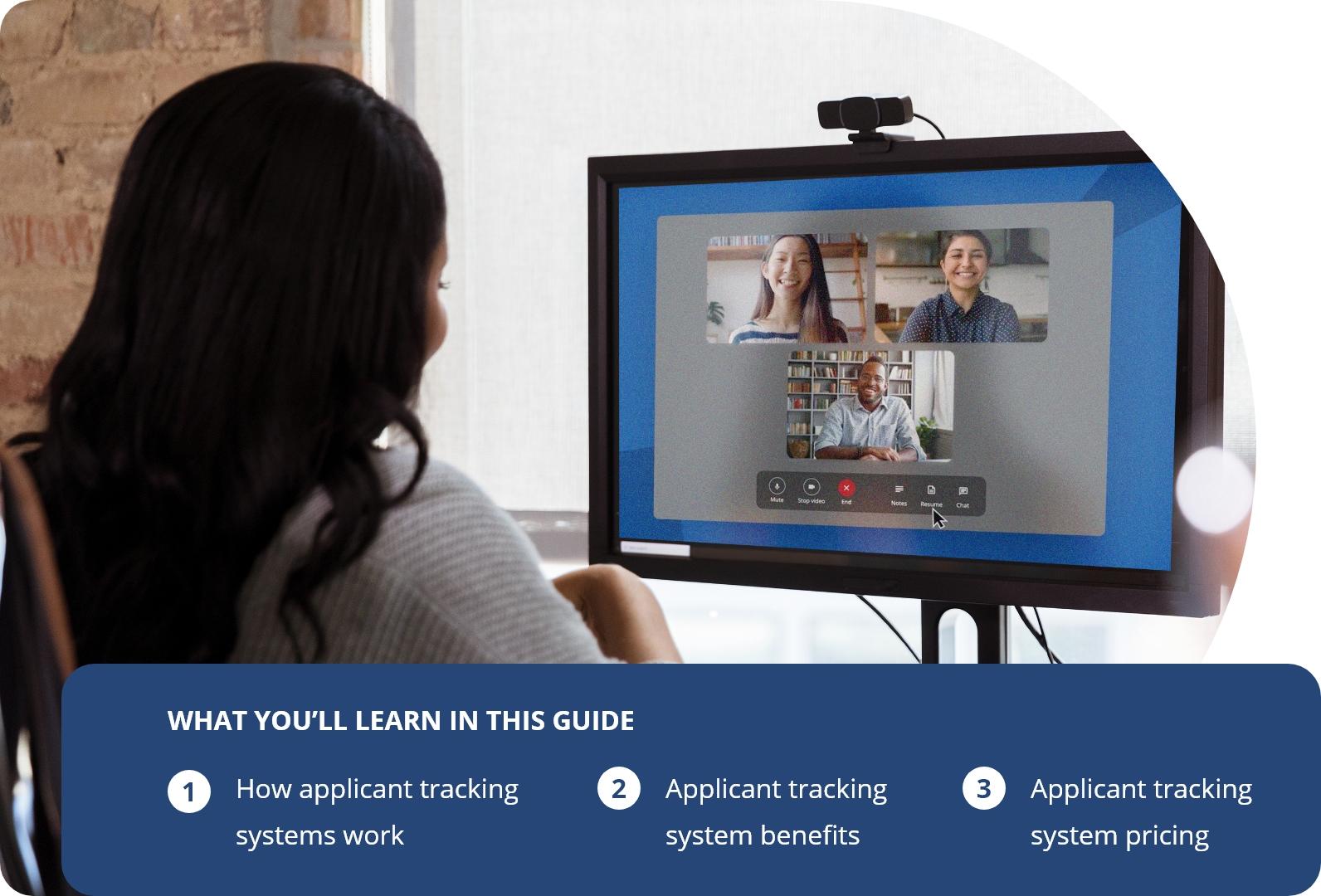
An applicant tracking system, or ATS for short, is an automated tracking system used by employers to manage job applications and candidates. Applicant tracking systems enable recruiting teams to hire faster by helping them stay organized. Many of today’s applicant tracking systems have evolved to include numerous features that help recruiters source candidates, post open requisitions to job boards, pick out best-fit resumes, screen resumes, and even schedule interviews. What began as simple resume parsing software 15 years ago has evolved into a plethora of choices for strategic hiring and recruiting platforms.
At their most basic, applicant tracking systems make it easier to manage requisitions and candidates by consolidating resumes and candidate information for each requisition. Today’s much more robust applicant tracking systems assist with far more. Web-based applicant tracking software can perfectly integrate with a pre-existing career site to provide a seamless candidate experience and simplify the application process while automatically collecting and organizing applicant information. Once the application is submitted, the ATS can also rank the resume and application based on the required education, experience, skills, or other relevant criteria.
Aside from application submission and resume parsing, candidate tracking systems are also helpful in the next stages of the recruitment process: screening and interviewing. Today’s evolved ATS software options have video interviewing capabilities and interview scheduling tools designed to help recruiters speed up their time-to-fill and provide candidates with a better experience. All of this data is stored in one shared dashboard, allowing recruiters and hiring managers to easily collaborate and view up-to-date, accurate candidate information.
Robust applicant tracking systems will have advanced capabilities: they integrate with background check providers for easy checks and authorizations, send offer letters, and even predict an applicant’s potential performance at your company. While each applicant tracking system has its own set of special features and extra tools, they all share the common goals of streamlining the hiring process and maintaining correct applicant records.
APPLICATION TRACKING SYSTEM (ATS) DEFINITION
“An applicant tracking system is comprehensive software used to receive applications, parse resumes, organize and screen applicants, and track potential candidates through the entire hiring process. Using an ATS improves the candidate experience and quality-of-hire, reduces costs and administrative burden, and speeds up time-to-hire.” – ClearCompany
The labor market moves at a fast pace, and in recent years, competition for skilled top talent has increased, candidate expectations have shifted, and old ways of recruiting and hiring aren’t cutting it. You need fast, fair, scalable hiring processes, which means you need an applicant tracking system to step up your recruiting and hiring game.

ATS software is developing rapidly, giving you access to an increasingly powerful toolkit for sourcing, hiring, and retaining new employees. It gives you everything you need to design an engaging candidate experience, streamline your processes, and get candidates hired faster.
The best ATS solutions offer everything you need to support an excellent candidate experience and effective recruiting processes, including HR automation and artificial intelligence (AI):
Applicant tracking systems have come a long way in recent years, with technology enabling a much faster evolution of software products and tools. A large majority — around 75% — of recruiters and hiring professionals use recruiting or applicant tracking software. And, it seems to be working: the vast majority of those recruiters and hiring professionals (94%) say the applicant tracking software has had a positive impact on their hiring process. There are many notable benefits to implementing an applicant tracking system for recruiters and HR teams, not least of which is making it easier to find and hire better candidates.
75% of recruiters and HR teams use an ATS.
94% of those say the ATS positively impacted their hiring process.
Candidate experience matters more than ever, and it begins before candidates even submit their applications — 60% of job seekers abandon applications that are too long or complex. The right applicant tracking system can help make things simpler, both for recruiters and HR teams, and for candidates, and help create a smoother candidate experience.
Applicant tracking software can send out automated responses to candidates to make their application status clearer — 83% of candidates say this small measure would greatly improve the overall hiring experience.
50% of candidates have turned down a job offer due to poor candidate experience. Implementing an ATS keeps your processes current so you don’t miss out on best-fit candidates.
Many of today’s applicant tracking systems support powerful mobile tools that give your applicants the freedom to apply anywhere, anytime, and enable fast, easy communication between candidates and recruiters. 70% of job seekers search for jobs from their phones, making it an ideal place for companies to get in front of the right candidates. Mobile tools an ATS can offer include:
Text-to-Apply
Mobile Applications
Candidate Texting
The ability to automatically update candidates as their resumes or application moves from one stage to another sets you apart in the candidate experience.
Research Manager, Emerging Trends & Technologies
Companies can receive as many as 250 applications per job opening, which means time spent parsing resumes quickly adds up. If a company has just a handful of open positions, recruiters can quickly get bogged down with screening, slowing down time-to-hire and increasing the likelihood that candidates will accept a job elsewhere.
Automation eliminates repetitive tasks, keeps accurate records, and gives recruiters access to powerful tools that make recruiting easier and leave them with more time to spend finding the best candidates, conducting interviews, and filling open positions. Using features like job board posting and interview scheduling helps reduce both time-to-fill and time-to-hire, two crucial recruiting metrics that are good indicators of the effectiveness of an organization’s hiring process. Speeding up your time-to-fill and time-to-hire is crucial in landing talent before competitors, and features that take the administrative work off your hands help accelerate both metrics.
Consider the back-and-forth that often goes into scheduling interviews, then multiply that by the tens, hundreds, or even thousands of positions you must fill. It adds up! With an applicant tracking system, interviews can be scheduled with the click of a button, on the candidate’s own time. It is estimated that an ATS can reduce the time needed for hiring by about 20%.
DID YOU KNOW?
Candidates are responding more quickly to text messages than other forms of communication, with the average response time for texts sitting at upwards of 60x faster than for email.
ATS software is an asset to recruitment planning because they provide the analytics needed to make strategic decisions. ATSs give recruiters the ability to analyze large data sets from recruitment activities (sourcing, screening, interview scheduling, etc.) to better understand their processes. With a better understanding of how recruiting currently operates, teams can identify costly bottlenecks and obstructions and increase efficiency across their recruitment processes.
86% of recruiters say an ATS helps them hire faster.
We believe in a pricing model that’s transparent and personalized, and that’s why our pricing options are built specifically for you — no hidden fees, software costs, or tricky increases. Built with client feedback to be a lean, mean hiring machine, our Applicant Tracking System is an award-winning talent management solution that can integrate seamlessly with other software you’re already using.
In the market to take the first step toward perfecting the first part of your talent management process? You only pay for the tools you’re using at ClearCompany. Chat with us today to get a clear quote for Applicant Tracking!

ATS systems are used by companies across various industries, from small startups to global corporations. Small and medium-sized enterprises benefit from ATS software by gaining access to streamlined recruitment processes, improved candidate tracking, and enhanced collaboration among hiring teams. Startups leverage ATS platforms to establish efficient hiring workflows from the outset, enabling them to scale their recruitment efforts as the company grows.
Similarly, large enterprises rely on applicant tracking systems to manage high volumes of job applications, automate repetitive tasks, and maintain compliance with hiring regulations. In industries such as technology, finance, healthcare, and retail, where talent acquisition is especially competitive, ATS software gives companies an edge by enabling proactive candidate sourcing, talent pipeline management, and data-informed decision-making. Organizations in highly regulated industries, such as construction or healthcare, use ATS solutions tailored to their compliance requirements and unique hiring processes.
ATS systems are valuable tools for companies of all sizes and industries that want to optimize recruitment, hire more efficiently, and attract top talent to drive business success.

It can be intimidating to select a new software system for your company. Not only does the ATS have to meet your company’s criteria and come with all the right tools, but it also needs to be simple enough for your team to learn, demonstrate enough value to win the approval of the CFO, and come with a painless implementation process and continued support. It can be especially daunting when it comes to applicant tracking systems since your team’s ability to find and hire the right candidates is a defining factor in overall business success.

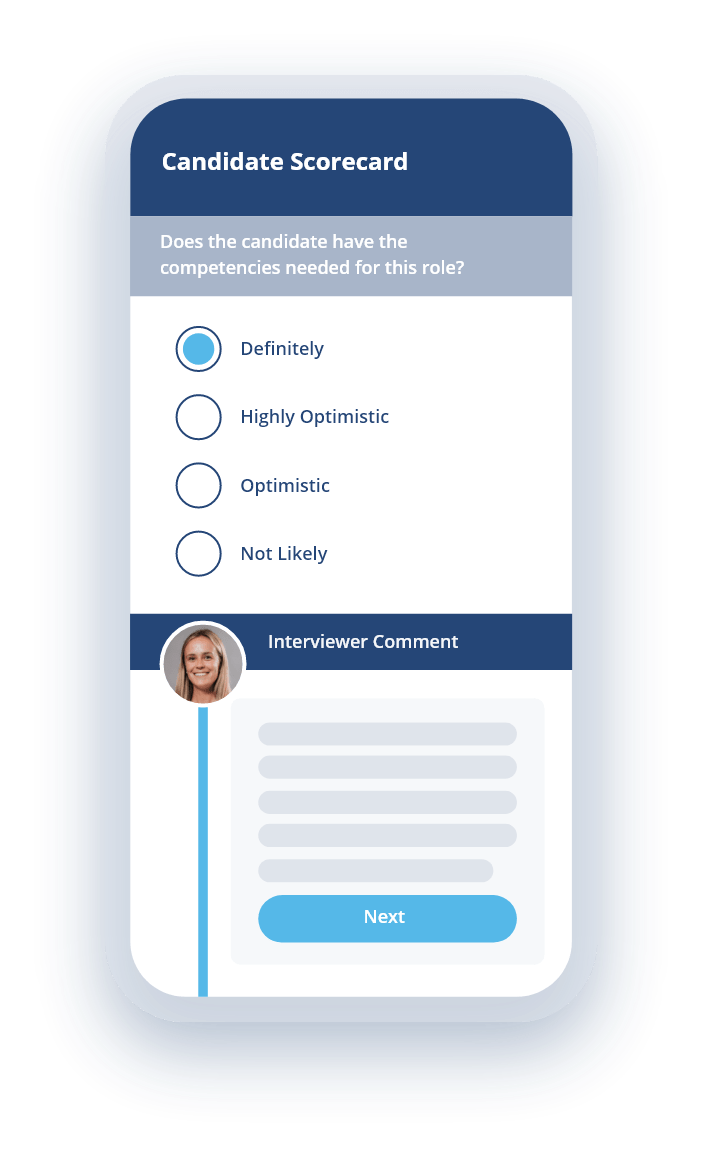
Applicant tracking systems are designed specifically to manage applicants and candidates during the recruiting and hiring process. ATS software is used by recruiters, hiring managers, and other HR professionals to streamline their recruitment processes, organize applicant information digitally, and evaluate candidates. Other HR software handles different parts of the HR function, from payroll and benefits to employee engagement and performance management.
The best ATS is the one that meets your business needs. There are, however, some common features you’ll find in the very best software solutions:
Need help finding the best ATS for your business? Get ClearCompany’s ATS Buyer’s Guide and make your choice with confidence.
Did you know that the number of negative candidate experiences reported has doubled since 2020? Time-to-hire has also increased, and it’s led to an increase in candidate ghosting and can impact new hire retention. An ATS is integral to beating these trends.
With an ATS, recruiters can more easily provide a transparent, high-touch candidate experience. An ATS provides the tools they need to communicate quickly and frequently, both with internal teams and with candidates. It also enables candidates to track their application status and get timely updates and feedback.
As a result, candidates are left with a positive impression of your company and are far more likely to apply in the future, recommend your business to their friends and families, and patronize your business themselves. Considering the fact that a majority of candidates won’t be hired, this is important — you don’t want to alienate any candidates and turn them into brand detractors.
Top-notch ATS software can integrate seamlessly with your other HR software, including payroll and benefits administration systems, onboarding tools, performance management software, and learning software. Integrations enable smooth data transfer across different HR functions, improving efficiency and reducing manual data entry errors.
ATS solutions and Candidate Relationship Management (CRM) systems are powerful tools for recruiters and HR teams. The main difference between these two types of recruiting software is which part of the process they handle.
An ATS is used for much of the administrative and logistical side of hiring, like posting open jobs, storing data, and communicating with candidates. A CRM, on the other hand, concentrates on building relationships with potential candidates, attracting passive talent, and maintaining ongoing communication before and after the application process.
The best ATS software combines traditional ATS features with CRM tools to help you consolidate your HR tech stack and work smarter.
At its core, an ATS solution’s main purpose is to contain, edit, and track open requisitions. While today’s Applicant Tracking Systems have evolved to include countless bells and whistles, it’s more important to make sure the system you select aligns with how your teams work and that those bells and whistles can all be useful to recruiters and HR teams. Make sure to ask specifically how you can configure the system to fit your needs, both now and in the future.
The majority of applicant tracking systems integrate with job boards, giving your team the benefit of distributing job postings across multiple job board platforms. The best applicant tracking software should also use automation to assist in filtering applications, screen candidates, and schedule interviews. Applicant tracking software that incorporates interview scheduling and mobile tools helps:
Ask the vendor for a company whose career page is supported by their ATS and go through the application process. You’ll get a sense of ease of use, branding options, and functionality in one fell swoop. During your demo, make sure to ask your representative or salesperson if their ATS has any tools or options to track candidate experience or how they measure or define the quality of candidate experience.
Compliance keeps many recruiters and HR pros up at night, and with good reason! There’s a lot of sensitive data stored in many of the systems we use, and we’re frequently required to adhere to strict reporting policies. Ask how secure your data will be and how frequently they’ve updated their safeguards and standards. If you work in an especially security-conscious industry, mitigate risk upfront and ask for specifics about compliance and standards before making a final decision on which ATS to use.
Before you start evaluating applicant tracking systems, list your tech stack and send it to the representative conducting the demo so they can answer specific questions or offer case studies of other clients that utilize the same integrations. Also, check out partner pages or portals to find out which software integrates with the ATS you’re considering.
Pay attention to the company that’s behind the technology. Do they have good customer reviews and ratings? Are they responsive to complaints or comments online? Do they charge for implementation and assistance? Do they take customer feedback into consideration when developing their product, and if so, can they show an example of a customer-prompted update? The product you select should help you meet your hiring goals and help make your recruiting and hiring processes more efficient while providing top-notch customer service. To help make your decision, gather reviews from all over the web and consider consulting colleagues and specialty groups on Facebook or LinkedIn.
Almost every recruiter and HR professional who uses an ATS says it’s positively impacted their hiring processes. ATS software helps your team work more efficiently, simplifying and automating processes that used to waste their valuable time. It gives your recruiters the ability to effortlessly organize candidate information and increase their reach, building a more qualified and diverse pool of candidates.
With an ATS, recruiters are able to quickly post open jobs, screen candidates, schedule interviews, and send offer letters, and hiring teams can conduct fair, structured interviews and make better choices about who they hire. An ATS also helps teams design a great candidate experience, making it easy to stay in touch with candidates and get them hired faster.
Robust ATS systems like ClearCompany are also equipped with reporting and analytics capabilities, giving your team access to deeper insights that help them develop better hiring strategies. Set up dashboards to monitor important metrics and dig into the data to build the best possible candidate experience.
Artificial intelligence (AI) is enhancing ATS software and giving talent acquisition and HR teams a leg up when it comes to time-consuming processes. AI can help with many tasks:
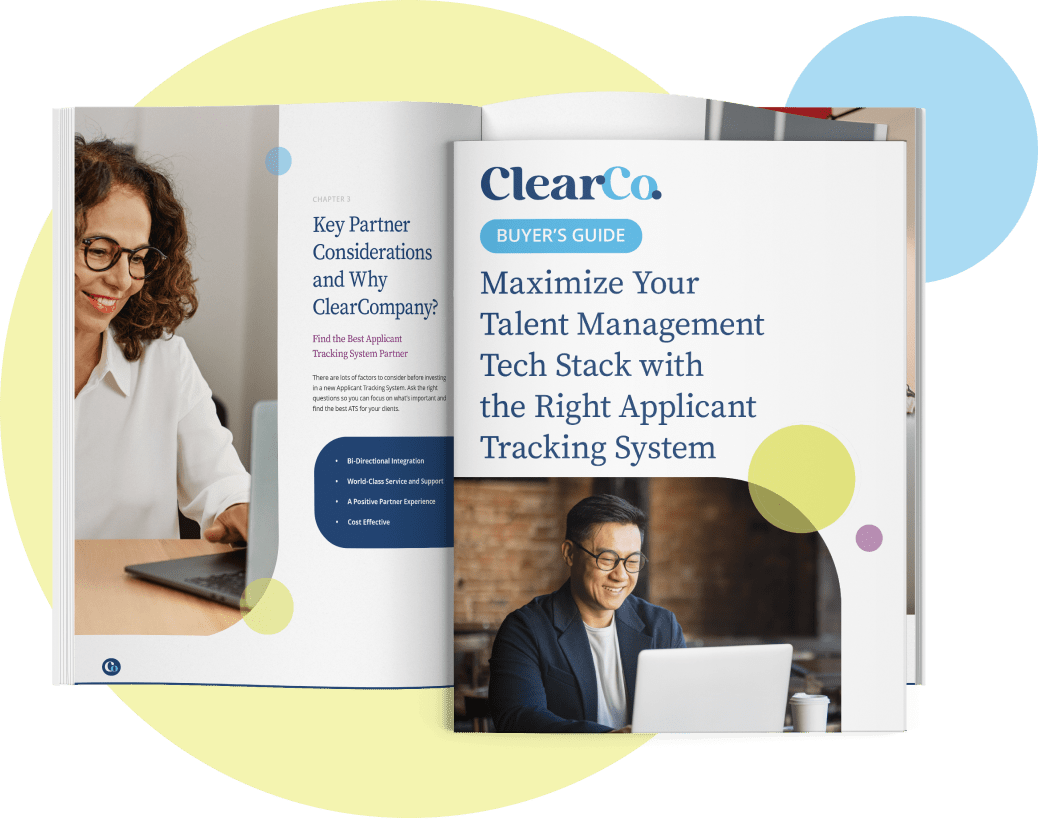
Choose the right Applicant Tracking System for your organization.
Download the guideDid you know that there are over 220 applicant tracking systems on the market today? There’s sure to be no shortage of new solutions as technology continues to advance —but how are you supposed to make sense of which system to use when the market is so crowded?
Finding the right applicant tracking software out of the hundreds on the market can be difficult. Take a look at some of the key features to look for to find the most capable, useful applicant tracking system to meet your organization’s needs.
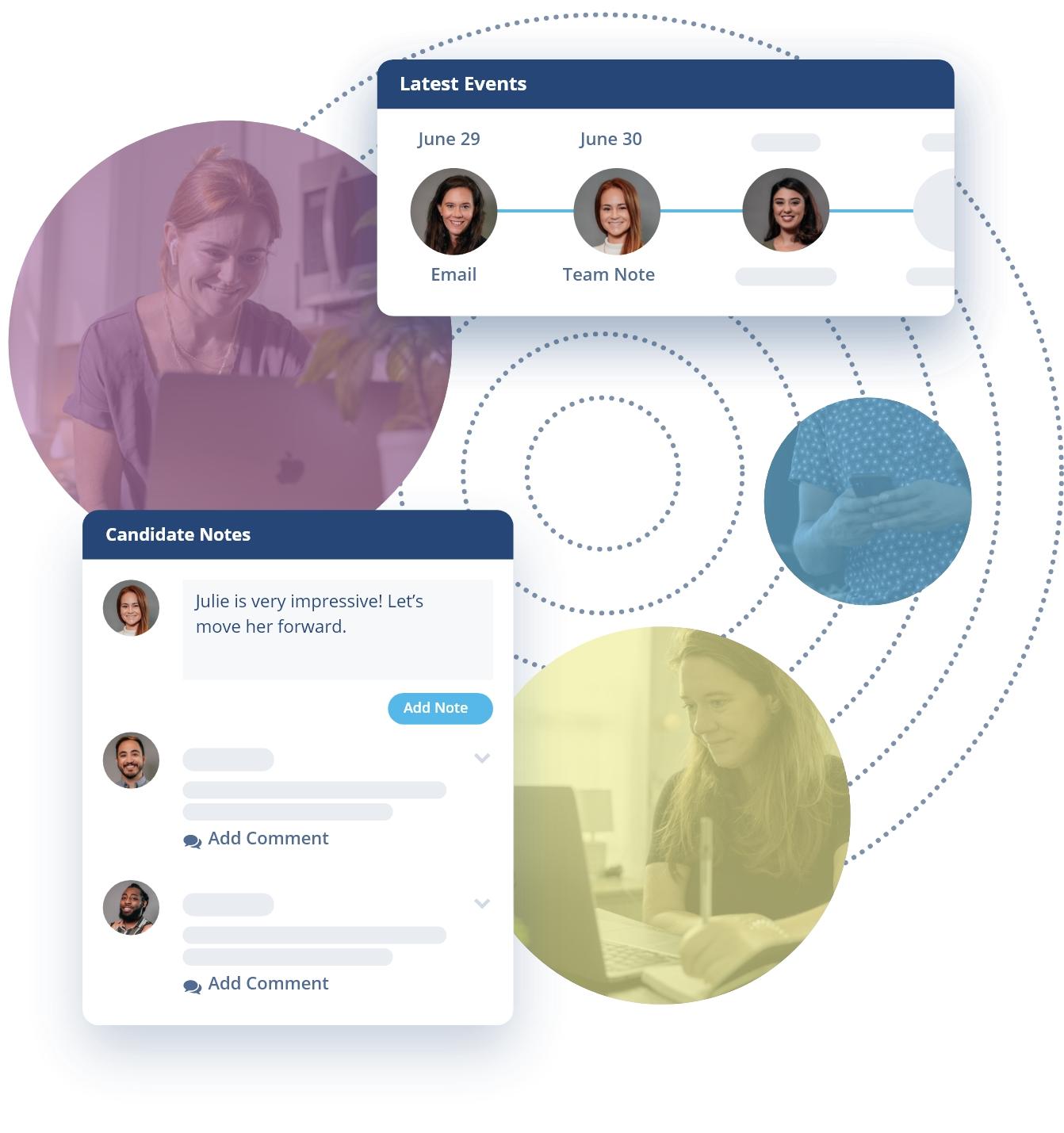
First, it’s essential to set clear goals for successful applicant tracking system implementation. Evaluate your current hiring process and identify pain points, inefficiencies, and areas for improvement to define your objectives for implementing the ATS. Those objectives may include streamlining resume screening, improving candidate communication, or enhancing data analytics capabilities.
After establishing your goals, it’s time to select the right ATS provider. After choosing your ATS solution, the implementation process begins. Implementing new recruiting software typically involves configuring workflows within the system to align with your company’s unique recruitment processes and employer branding.
Tasks might include:
Post-implementation, be sure to continuously evaluate and optimize your new system. Whenever possible, meet with your account manager or attend vendor-hosted training sessions. Don’t just set-it-and-forget-it — stay on top of software updates and new features to ensure you’re maximizing the effectiveness of your new ATS and improving hiring efficiency and candidate experience.
78% of hiring professionals say that candidates hired through their ATS are of higher quality than previous applicants. Knowing that ATSs truly help bring better people into your organization empowers us to continue developing our product suite to help our thousands of clients find, hire, and retain top talent.
ClearCompany’s best-in-class, award-winning Applicant Tracking Software helps take the burden off of your recruiting and hiring teams by ensuring you screen for, communicate with, and interview only the best candidates for your open positions. Let ClearCompany’s ATS help you make your recruitment strategy more efficient and effective, improve candidate experience, and bring the right candidates into your organization.
Check out the full (ever-growing!) list of awards ClearCompany’s leading software has earned, then click the button below to see a demo of the ClearCompany Applicant Tracking System.
Although most recruiters use ATS software, there are still a few myths about it. Let’s debunk some common ATS misconceptions.
All ATS software is the same
While ATS software is meant to aid with recruiting and hiring, it is often specifically designed for companies based on size, industry, or hiring needs. For example, large companies might look for an ATS with advanced analytics and reporting that can integrate with their existing HR software. A small or midsize business may be more concerned with the system’s user-friendliness and tailored workflow automation capabilities.
This is great news for your company — you can be sure that there’s an ATS on the market that can help you meet your goals.
Applicant tracking systems are only for large companies.
ATSs are useful for businesses of all sizes — most providers offer customizable, scalable solutions for smaller businesses. They assist large companies with complex hiring processes, while companies large and small benefit from streamlined recruitment and more efficient hiring
An ATS is hard to implement.
Setting up an ATS isn’t the simplest process, but you won’t be left to figure it out on your own. You’ll need to plan and coordinate setup with your team, but modern ATS platforms typically provide comprehensive support and resources to facilitate implementation. This often consists of user-friendly interfaces and a dedicated customer support person or team who helps configure the system. Post-setup, most offer continued access to customer support, as well as additional online help resources.
ATSs are replacing recruiters.
While applicant tracking systems automate parts of the recruitment process to improve efficiency, they’re not designed to replace humans in human resources and recruiting. Instead, they’re enhancing recruiters’ capabilities by automating time-consuming administrative tasks, streamlining workflows, and providing data-informed insights. Your team is critical for candidate engagement, relationship-building, and making strategic hiring decisions that go beyond the capabilities of ATS software.
ATS software is hard to use.
As with many software applications today, the user experience is a top priority for ATS providers. They offer intuitive interfaces designed intentionally to reduce the learning curve and simplify recruitment processes for recruiters, hiring managers, and candidates alike.
ATS platforms often feature customizable dashboards, drag-and-drop functionality, and mobile-friendly interfaces to enhance usability and accessibility. In addition, most ATS providers offer training, resources, and support teams to help users maximize software capabilities and overcome usability challenges.
The ATS has come a long way from its beginnings as a simple candidate database and resume parsing tool. The applicant tracking systems market is valued at more than $2 billion and is expected to exceed $3 billion in the next few years. That anticipated growth means that more human resources teams will continue to adopt ATS systems, and ATS providers will continue expanding their software capabilities to meet users’ needs.
As ATS software continues to develop, we expect to see these trends growing across the market:

